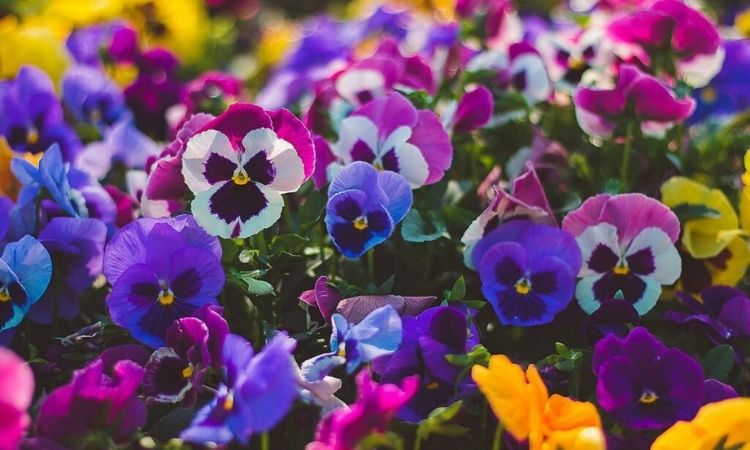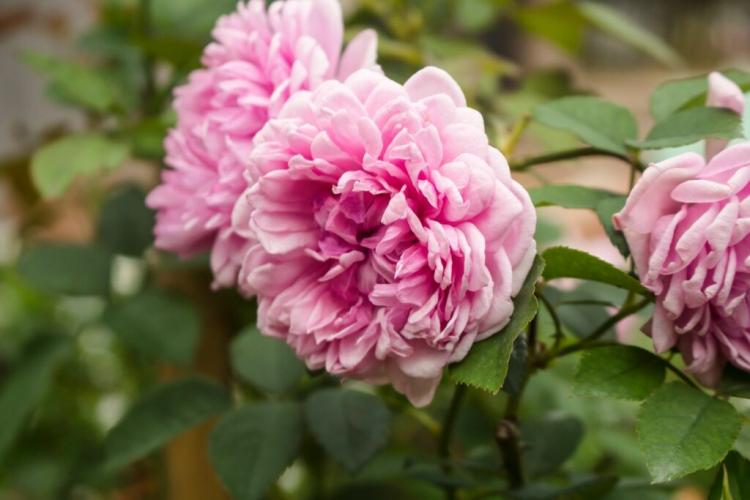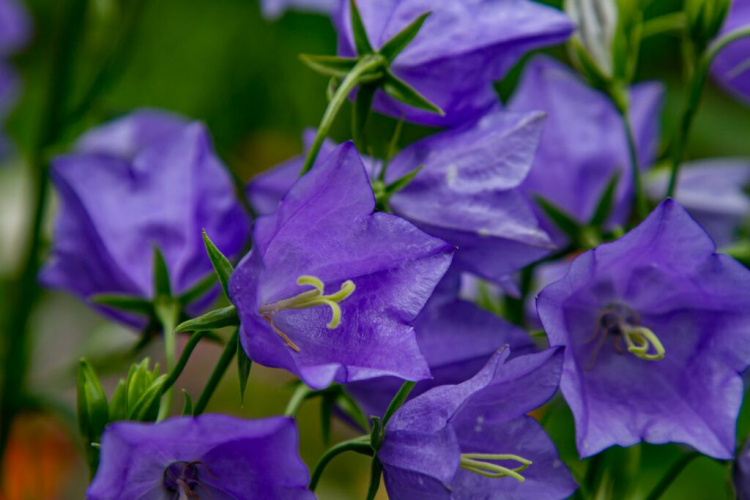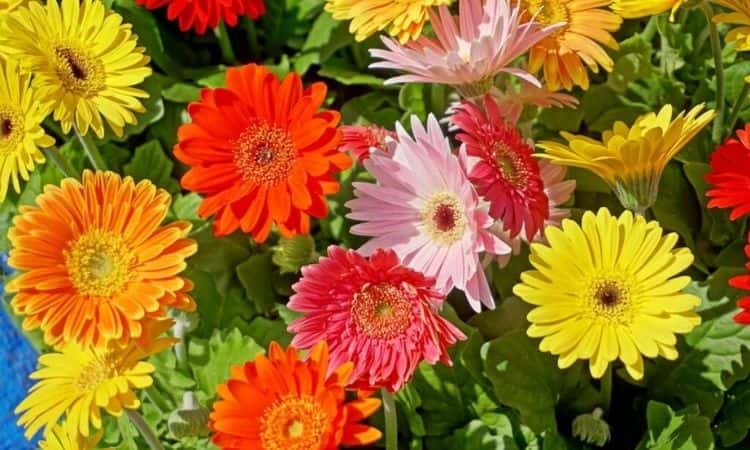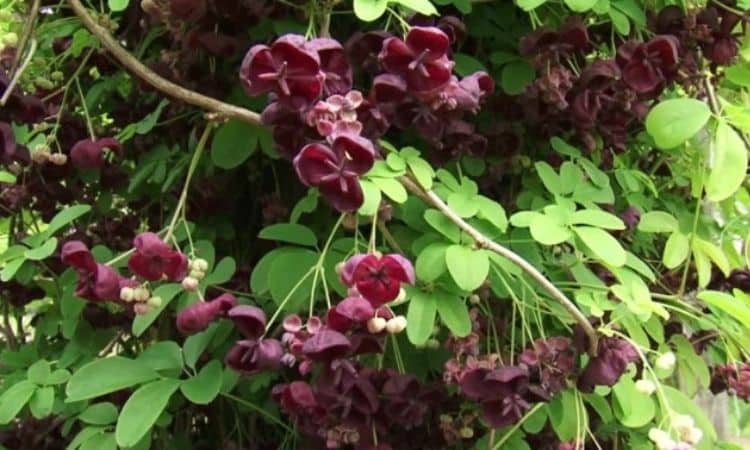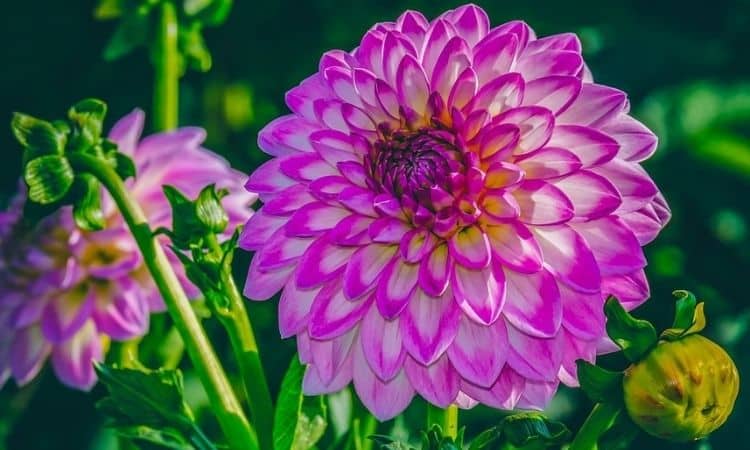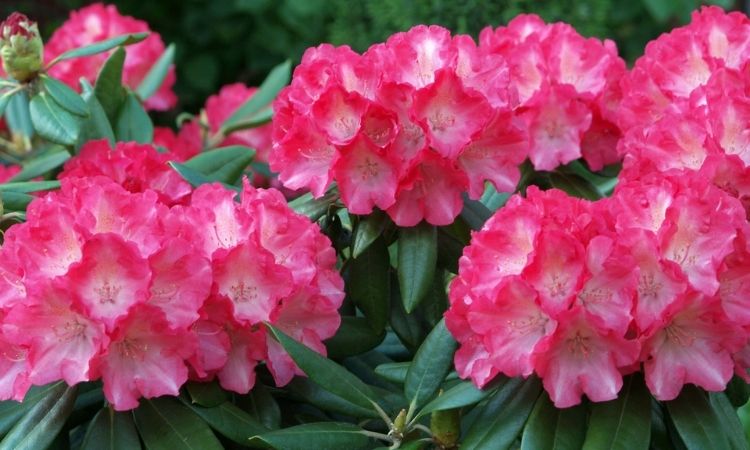How To Planting Pansies And Make Them Bloom In Your Garden?
Pansies provide a colorful planting in the fall and spring. What to consider when growing pansies, you can learn here. After years of breeding, the wild pansy (Viola tricolor) gave rise to the cultivated forms we know, the garden pansies (Viola × wittrockiana). These cultivated forms impress with large flowers that shine not only in typical colors such as yellow, blue-violet, or white but also in orange and red. New cultivars also show spotted, mottled and striped flowers. Crosses with horned violets gave rise to so-called miniature pansies. They have smaller flowers, which can even be filled.
Pansies Flowering Season: Autumn And Spring Bloomers
Table of Contents
As harbingers of the new garden season, you can watch the first pansies blossom cheerfully as early as March. But for friends of the robust long bloomers with the catchy name, spring doesn’t have to be the end of the line. Depending on when you plant young plants or sow seeds, you can still enjoy the colorful blossoms of pansies in the fall.
The following applies:
- Spring bloom (March-July): plant out in spring (by March); sow seeds in February.
- Autumn bloom (October/November): planting in late summer/fall; sowing in early summer (until July).
- Pansies planted in early summer can also bloom throughout the winter in mild weather or on a windowsill.
Planting Pansies: In Pots And Beds
Pansies feel at home in Europe and the temperate zones of Asia. As natives of our climate zone, pansies are very well accustomed to our weather. Therefore, pansies can be planted out very early in the year. After all, even night frost does not bother them. Pansies are also not picky about the soil and location.
- Soil: water-permeable, nutrient-rich, humus, low in lime.
- Soil pH: 6.5 – 8
- Habitat: sun to partial shade
The colorful garden inhabitants are suitable not only for planting in the bed but also as an underplanting for deciduous hedges and perennials or in pots as a splash of color for the house and balcony. As a symbol of remembrance and memory, pansies are also often found planted on graves.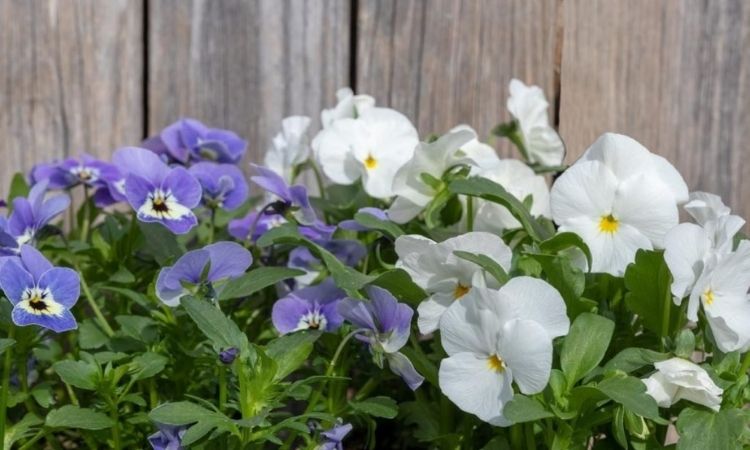
Planting Time For Pansies
Pre-planted plants are quite insensitive to cold. Therefore, depending on the availability of time and motivation, the plants can be planted out from March to October. You should always keep in mind that the planting time will affect the blooming time of your pansies. If planted in the fall, the flowers will be presented with a short winter break until late spring.
Pansies planted in the spring will bloom from March into the summer. Planting in the spring offers the advantage of a particularly large supply of young plants at garden centers or specialty retailers. If you plant your pansies in the summer, you should select a semi-shaded location. Otherwise, the plants that are not yet rooted in the ground could have problems in the midday sun.
You Might Also Like:
- How To Combat With Root Worm?
- Iron Fertilizer: Mode Of Action And Toxicity Of Iron Sulphate
- Cupressus: Expert Tips For Planting And Caring
Procedure For Planting Pansies
There is not much to consider when planting pansies. In the right location with the right soil, early bloomers are extremely hardy and thrive without much effort. Therefore, they are also wonderfully suitable for gardening novices. After buying the plants, all you have to do is pick up your gardening tools and start planting.
- Rake the soil thoroughly and remove weeds and stones.
- Planting hole: twice the size of the root ball
- Planting distance: 60 inches
- Loosen the root ball slightly with your hands.
- Plant the pansies; tamp down the soil.
- Water well; watering water with liquid fertilizer
It is best to place the planted pot protected from rain so that the substrate does not get too wet and the flowers do not stick. Good water drainage and the drainage layer of broken clay, perlite, or gravel are a must for the plants, as they are very sensitive to waterlogging.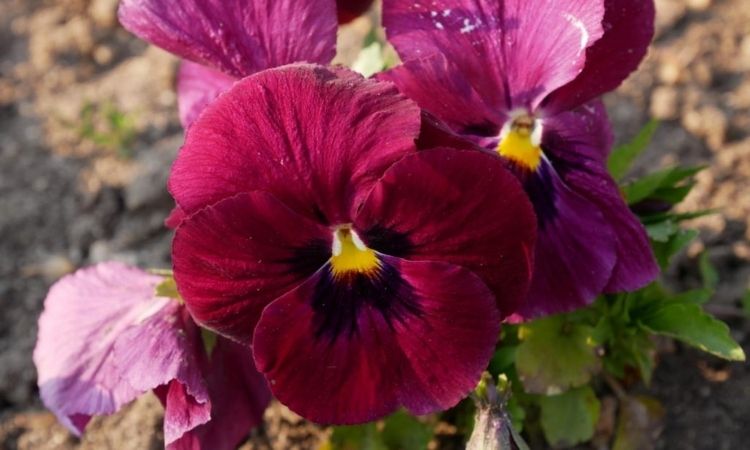
Socialization: Good Neighbors For Pansies
Pansies can be combined in an incredibly wide variety of ways simply because of their long blooming season. Just make sure that the small plants are not overgrown by their green neighbors. During spring bloom, they can be combined with other early bloomers such as horned violets, daffodils, snowdrops, and primroses. For a floriferous accompaniment during the fall bloom, perennials that bloom in the fall include cranesbill (geranium), spurge (euphorbia), and hostas.
You Might Also Like Pansies vs Petunia Flowers
Sowing Pansy Seeds Yourself
More and more people are tending to meet some of their vegetable needs by growing their own plants from seed. However, there is no need to draw a line at vegetable supply. Instead of treating your stomach, why not treat your eyes to pansies grown especially from seed? To do this, simply proceed as follows:
- Fill the seed tray with growing soil.
- Sow the seeds on the soil; only press lightly (light germination!)
- Germination temperature: 59 – 64°F
- Location: bright
- Germination time: about 10 days
The sowing time has a decisive influence on the later flowering time of the plants. If the flowering time is to be in spring, the seeds are sown in February and grown indoors. If the seeds are sown in July, you can enjoy the colorful flowers as early as the following fall.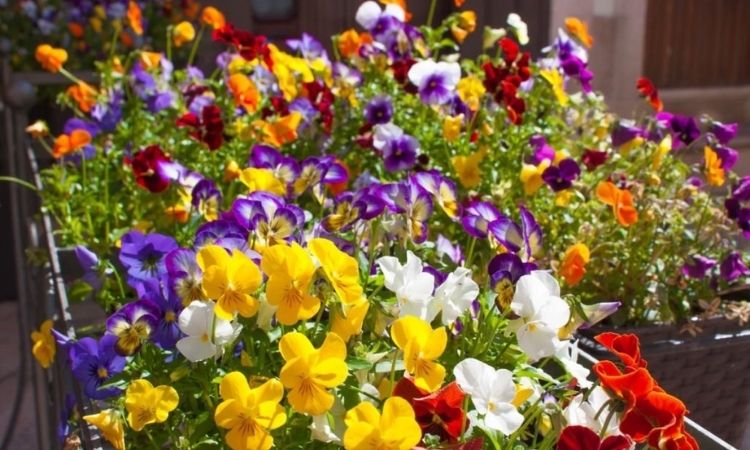
The seeds can also be sown directly into the bed. When sowing directly into the bed, space the seeds 60 inches apart. Make sure that the bed is not in the midday sun. Otherwise, the seedlings will most likely dry up. Also, mixing humus into the garden soil will ensure a good start.
Buying Pansies: What To Look For
In spring, the range of colorful flowering plants for the home garden is almost endless. Pansies are also part of the fixed assortment of supermarkets and hardware stores and can also be found in abundance in specialty stores. With their large, overlapping petals, these robust plants have crept into the hearts of so many amateur botanists that they are among the best-selling ornamental plants in Germany. But before you, too, choose a specimen of these heartbreakers, you should ask yourself the following questions:
- Does the plant look healthy and have a stocky growth habit?
- Is the root ball well developed?
- How hardy is the variety?
- Does the plant come from the greenhouse?
Plants grown in frost-free greenhouses are not hardy. Therefore, these pansies should not be planted in pots or flowerbeds until mid-March.
You Might Also Like
- 20 The Best Pond Plants For Any Water Depth
- Asian Bleeding-Heart: Tips For Planting And Caring For Lamprocapnos Spectabilis
- Bear Nut
- Repotting Bonsai: Timing And Procedure (With Video Instructions)
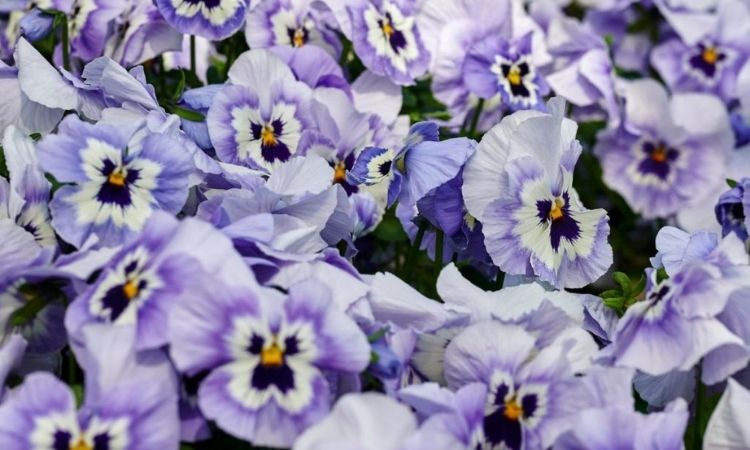
Successfully Overwinter Pansies
The garden pansy has its roots in Central European meadows and paths. It is to this origin that the one- to two-year-old pansy owes its winter hardiness. In the bed, the plants not only withstand decent loads of snow but actually enjoy the cool white.
You might so like: Top 60 Blue Flowers For Your Home And Garden
The layer of snow has an insulating effect and protects plants from bare frost. Since a white winter wonderland has become rather rare in the cold season, you yourself must ensure that your plants come through the winter unscathed.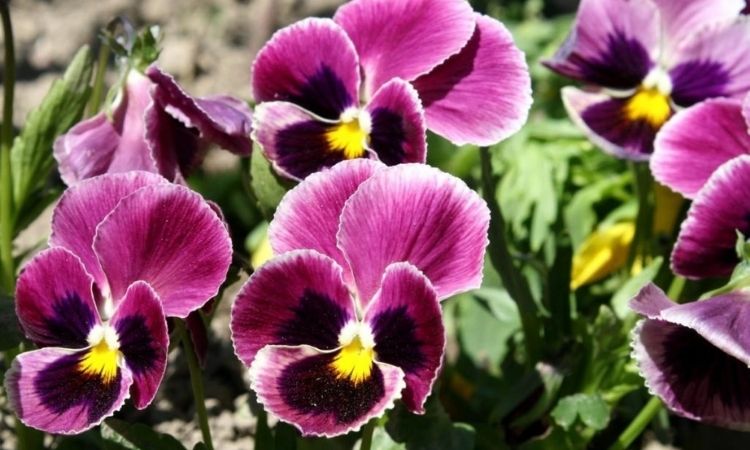
Everything about wintering in brief:
- October: prune back to just above ground level
- Cover plants with conifer branches, fleece, brushwood, leaves, moss, or bark mulch.
- Water lightly only on frost-free days
- Do not fertilize
- End of February/beginning of March: Remove winter protection
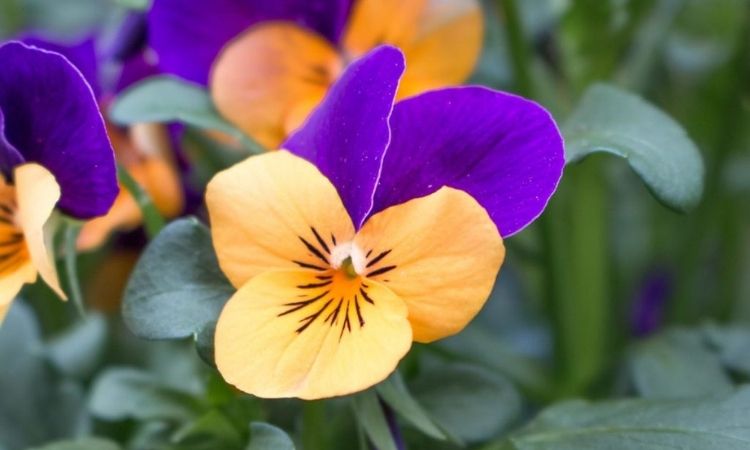 Pansies in pots are more vulnerable because the soil there can freeze through much faster. They, too, cut back and cover. Fleece is best suited for this purpose. In addition, the entire pot is wrapped with a fleece or newspaper. The carefully wrapped plant spends the winter in a sheltered, cool place and is watered only lightly. It does not need fertilizer. In March, the plant is released into the fresh air.
Pansies in pots are more vulnerable because the soil there can freeze through much faster. They, too, cut back and cover. Fleece is best suited for this purpose. In addition, the entire pot is wrapped with a fleece or newspaper. The carefully wrapped plant spends the winter in a sheltered, cool place and is watered only lightly. It does not need fertilizer. In March, the plant is released into the fresh air.
Pansies And Horned Violets: Differences And Similarities
Pansies (Viola × wittrockiana), as well as horned violets (Viola cornuta), belong to the violet (Viola) genus. The two species can even be crossed with each other. However, even though the many similarities cannot be dismissed, there are enormous differences. Pansies have higher nutrient requirements, as well as larger flowers. Horned violets are smaller and more delicate than pansies, but have a longer flowering period and are more persistent and hardy.
